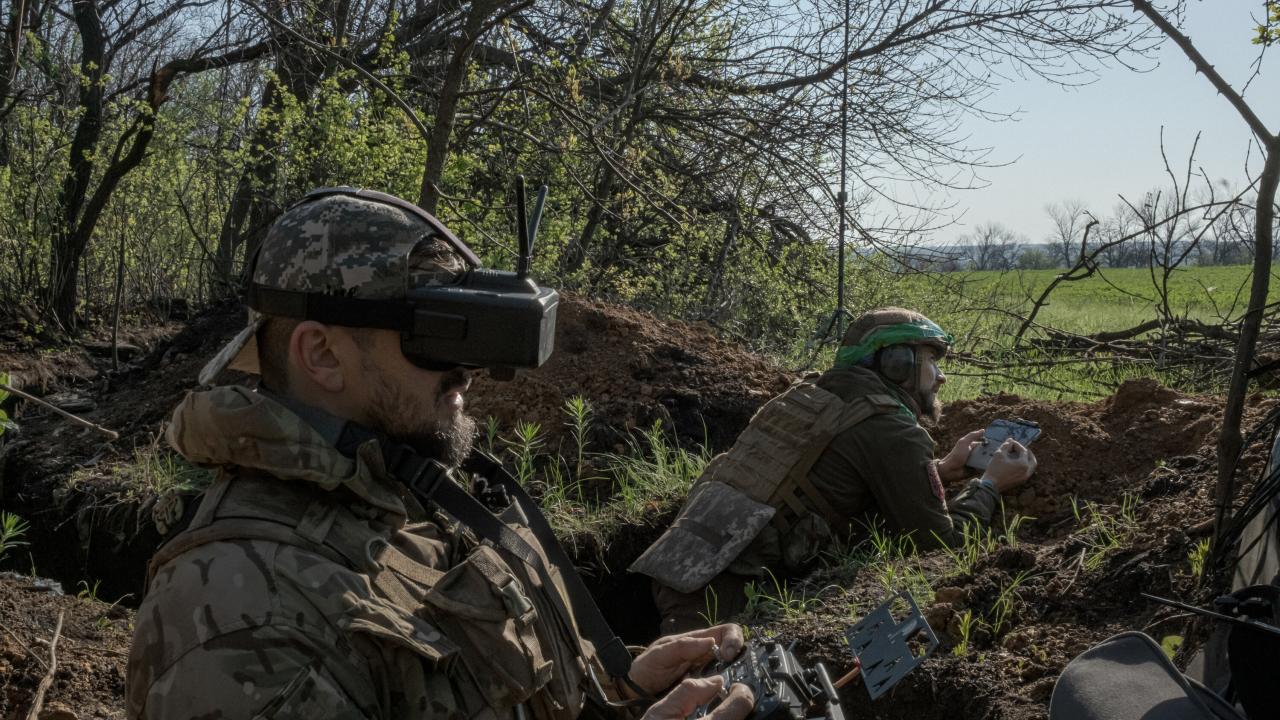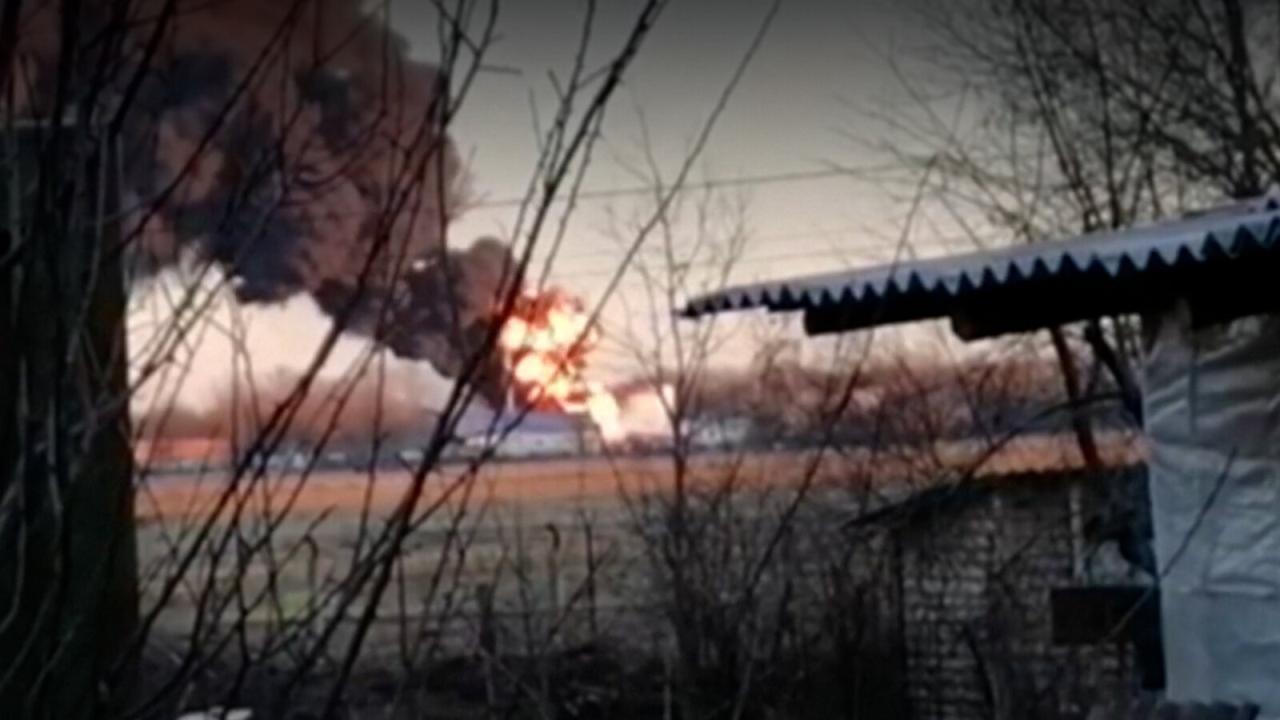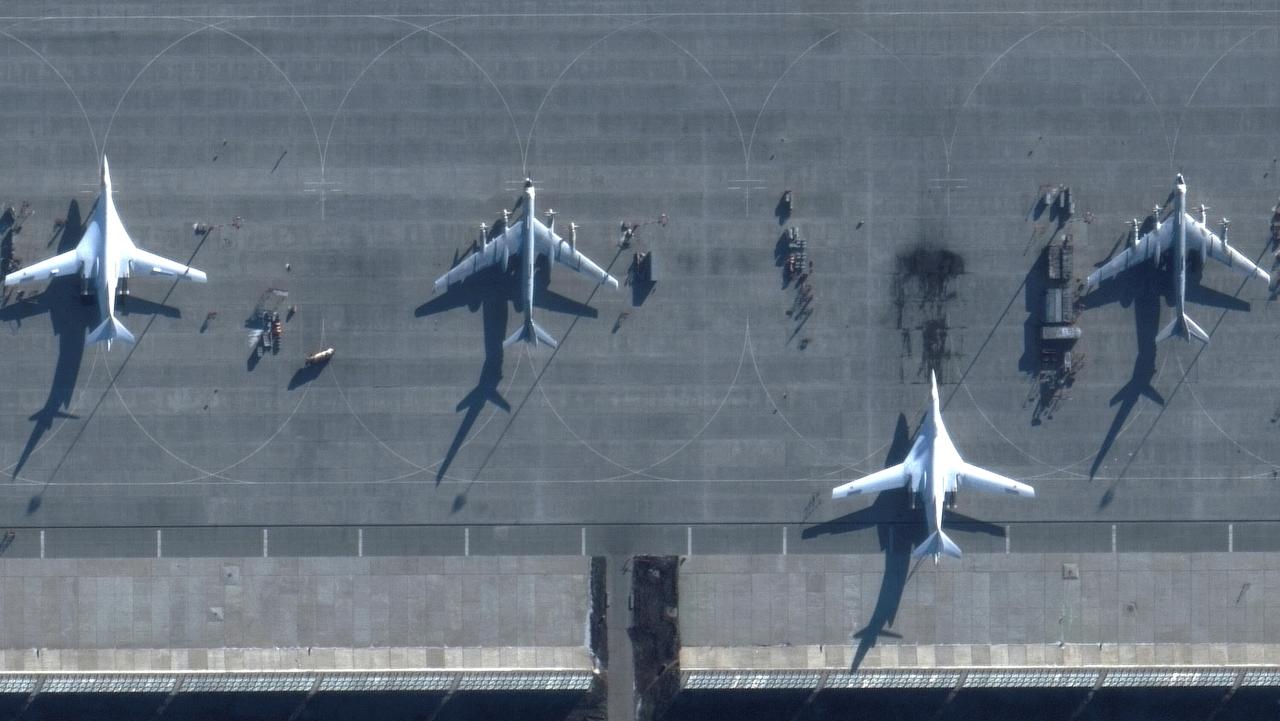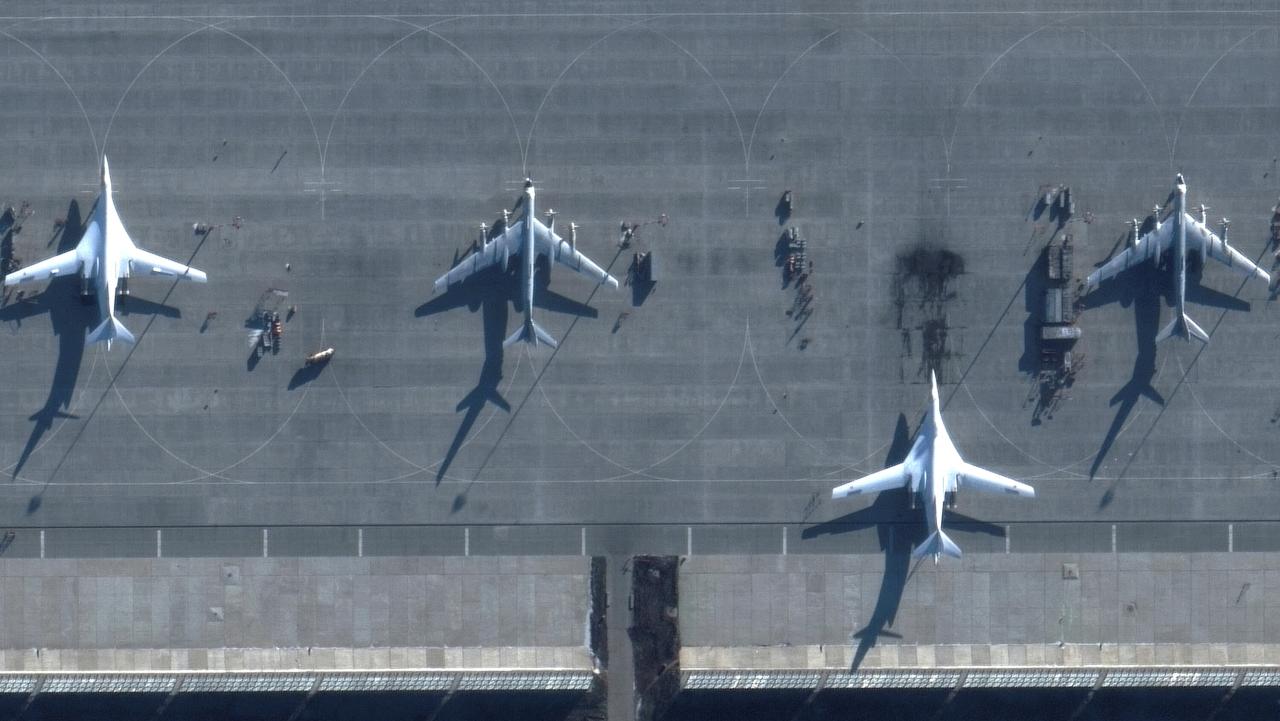Ukraine drone attack on russia – Ukraine drone attacks on Russia represent a significant escalation in the ongoing conflict, marking a shift in tactics and raising crucial questions about the future of warfare. These attacks, targeting military installations and infrastructure deep within Russian territory, highlight the evolving capabilities of Ukrainian forces and the challenges Russia faces in defending its vast expanse. The frequency and geographic scope of these operations are continuously evolving, prompting analysis of their strategic implications and potential international repercussions.
This analysis will delve into the various aspects of these attacks, examining the types of drones employed, their effectiveness, the military and strategic objectives, the international response, and the ethical considerations surrounding their use. We will also explore the technological advancements driving this conflict and the information warfare surrounding the narrative of these events. The impact on civilian populations and the potential for escalation will also be carefully considered.
Ukraine Drone Attacks on Russia: Ukraine Drone Attack On Russia

The escalating conflict between Ukraine and Russia has witnessed a notable shift in tactics, with the increasing use of unmanned aerial vehicles (UAVs), or drones, in attacks targeting Russian territory. These attacks represent a significant development in the conflict, raising questions about their effectiveness, strategic implications, and the broader geopolitical consequences. This analysis examines various aspects of these drone attacks, providing a comprehensive overview of their geographic scope, technological aspects, military implications, and international responses.
Recent drone attacks on Russia by Ukraine highlight the increasing use of unmanned aerial vehicles in modern warfare. This raises questions about both the effectiveness and the potential for mishaps, as seen in a recent civilian incident; a stark contrast to the military context is the orlando drone show malfunction , which underscores the need for robust safety protocols regardless of the application.
The implications for future drone deployments, both military and civilian, are significant given the potential for unintended consequences.
Geographic Scope and Frequency of Drone Attacks

Drone attacks originating from Ukraine have targeted various locations within Russia, exhibiting a pattern that evolves over time. A precise mapping of these attacks, including date, location, target, and estimated damage, provides crucial insights into the strategic objectives and operational capabilities behind these actions. The geographical distribution itself reveals trends and patterns that highlight the evolving nature of this conflict.
A timeline of significant drone attacks would illustrate the increasing frequency and reach of these operations. For example, early attacks may have focused on border regions, while later attacks might demonstrate a greater range and targeting of more distant infrastructure. A map illustrating these locations using latitude and longitude coordinates would further clarify the geographic spread of the attacks. Such a map would visually represent the distribution of attacks, enabling a better understanding of the strategic choices driving their deployment.
| Date | Location (Latitude, Longitude) | Target | Estimated Damage |
|---|---|---|---|
| Example Date 1 | Example Location 1 (Lat, Long) | Example Target 1 (e.g., Military Base) | Example Damage 1 (e.g., Minor Damage) |
| Example Date 2 | Example Location 2 (Lat, Long) | Example Target 2 (e.g., Oil Refinery) | Example Damage 2 (e.g., Significant Damage) |
| Example Date 3 | Example Location 3 (Lat, Long) | Example Target 3 (e.g., Airport) | Example Damage 3 (e.g., Moderate Damage) |
Types of Drones Used and Their Capabilities
The effectiveness of the drone attacks is intrinsically linked to the types of UAVs employed. Understanding their capabilities, including range, payload, and flight characteristics, is crucial to analyzing the strategic choices made by Ukrainian forces. A comparison of different drone models highlights the strengths and weaknesses of various platforms, and reveals how technological advancements influence the operational effectiveness of these attacks.
- Drone Model 1: Manufacturer, range, payload capacity, flight characteristics (e.g., endurance, speed, stealth capabilities). Example: A long-range drone with a large payload capacity might be used to target strategically important infrastructure, while a smaller, faster drone could be used for hit-and-run attacks.
- Drone Model 2: Manufacturer, range, payload capacity, flight characteristics. Example: A swarm of smaller drones might overwhelm defenses, while a single, larger drone could deliver a more significant payload.
- Innovative Tactics/Modifications: Examples might include the use of modified commercial drones, the addition of specialized payloads (e.g., explosives, electronic warfare equipment), or the use of swarm tactics to overwhelm air defenses.
Military and Strategic Implications
The drone attacks have had a demonstrable impact on Russian military operations and infrastructure. Assessing this impact requires examining both the direct damage inflicted and the indirect effects on Russian morale, resource allocation, and military planning. Understanding Ukraine’s strategic goals behind these attacks requires considering various factors, including the disruption of supply lines, the degradation of military capabilities, and the potential for influencing the broader political landscape.
Russia’s response strategies have evolved in response to the increasing frequency and sophistication of these attacks. These responses include deploying counter-drone systems, enhancing air defenses, and implementing stricter security measures around critical infrastructure. The effectiveness of these countermeasures is a key factor in determining the long-term impact of the drone attacks.
International Response and Implications, Ukraine drone attack on russia

The international community has responded to the drone attacks in diverse ways, reflecting varying geopolitical alignments and legal interpretations. A comparison of these responses across different countries and international organizations reveals the complexities of the international legal framework as it applies to this unconventional form of warfare. The potential for escalation and the broader geopolitical implications of these attacks remain significant concerns.
| Country | Stance | Justification | Potential Consequences |
|---|---|---|---|
| Example Country 1 | Example Stance (e.g., Condemnation) | Example Justification (e.g., Violation of sovereignty) | Example Consequences (e.g., Increased tensions) |
| Example Country 2 | Example Stance (e.g., Neutral) | Example Justification (e.g., Complex geopolitical situation) | Example Consequences (e.g., Limited impact) |
Civilian Casualties and Collateral Damage
Reports of civilian casualties and collateral damage resulting from drone attacks require careful verification. Establishing reliable information about civilian harm necessitates examining multiple sources and employing rigorous verification methods. The ethical considerations surrounding the use of drones in a conflict zone are complex and require a nuanced understanding of international humanitarian law and the principles of proportionality and distinction.
Technological Aspects and Countermeasures
The effectiveness of the drone attacks highlights key technological advancements in drone technology, including improvements in range, payload capacity, autonomy, and stealth capabilities. Russia’s response has involved the development and deployment of counter-drone technologies, ranging from electronic warfare systems to physical interception methods. The ongoing technological arms race between the two sides is likely to continue shaping the future of warfare.
Propaganda and Information Warfare
Both Ukraine and Russia utilize the drone attacks for propaganda purposes, shaping narratives and influencing public opinion. Social media and other information channels play a crucial role in disseminating information and shaping perceptions of the conflict. The information surrounding these attacks contributes to the broader information war, influencing public support, international perceptions, and the overall political dynamics of the conflict.
The ongoing Ukrainian drone attacks on Russia represent a complex and evolving situation with far-reaching consequences. The strategic implications, technological advancements, and ethical considerations involved demand careful scrutiny. While the attacks showcase Ukraine’s innovative use of technology and its determination to resist Russian aggression, they also highlight the risks of escalation and the potential for unintended consequences. Continued monitoring and analysis are crucial to understanding the full impact of these attacks and their potential to shape the future of the conflict.
FAQ Guide
What is the estimated cost of these drone attacks to Ukraine?
Recent Ukrainian drone attacks on Russian territory have highlighted the increasing sophistication and range of unmanned aerial vehicles. This raises concerns about potential mishaps, not just in warfare, but also in civilian applications, such as the unfortunate drone show accident which underscores the need for robust safety protocols. The incident serves as a reminder of the potential for unintended consequences, even with seemingly less destructive technology, relevant to the ongoing situation in Ukraine.
Precise figures are unavailable due to the classified nature of military spending and the varied sources of drone technology. However, the cost likely involves significant investment in drone procurement, maintenance, operator training, and intelligence gathering.
Recent Ukrainian drone attacks on Russian territory have highlighted the increasing sophistication of unmanned aerial vehicles in modern warfare. The technology involved is quite complex, and monitoring such activity often requires advanced surveillance systems, much like the high-resolution imagery provided by the cobequid pass camera , which offers a clear view of its surroundings. These advancements in both offensive and defensive drone capabilities continue to reshape the geopolitical landscape.
How effective are Russian countermeasures against these drones?
The effectiveness of Russian countermeasures is debated. While Russia possesses various air defense systems, the persistent nature of the attacks suggests limitations in their complete effectiveness. The success rate of intercepting drones varies depending on factors like drone type, weather conditions, and the sophistication of the countermeasures employed.
Are there any international laws specifically addressing these types of attacks?
International humanitarian law governs the conduct of warfare and prohibits attacks targeting civilians. The application of these laws to drone strikes is complex and subject to interpretation, depending on the specific circumstances of each attack and the target involved.
